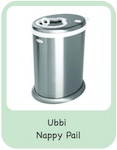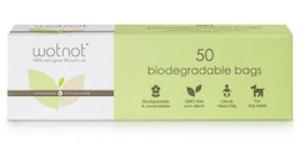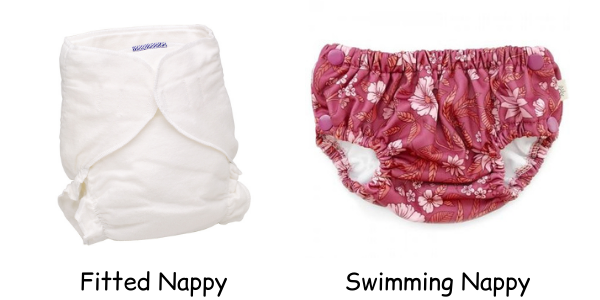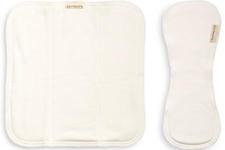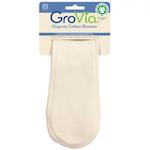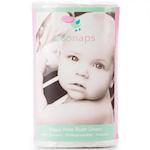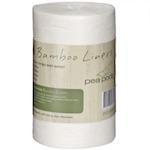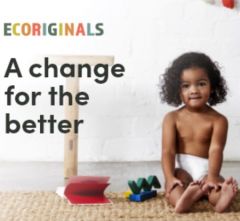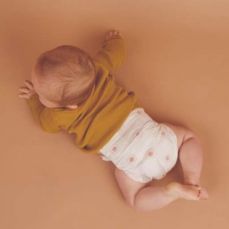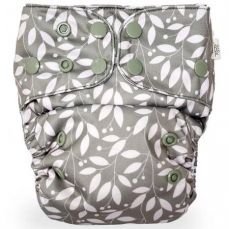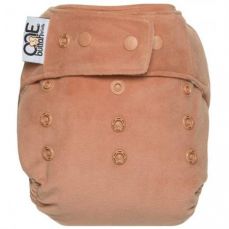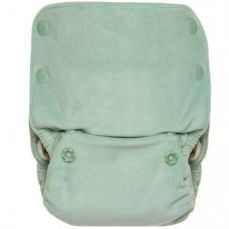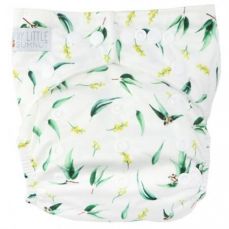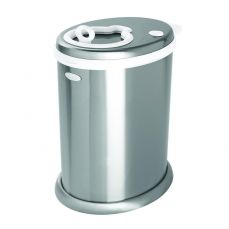Nappies Buying Guide Hygiene Suitable for stages: 0 - 3 Months, 3 - 6 Months, 6 - 12 Months, 12 - 18 Months
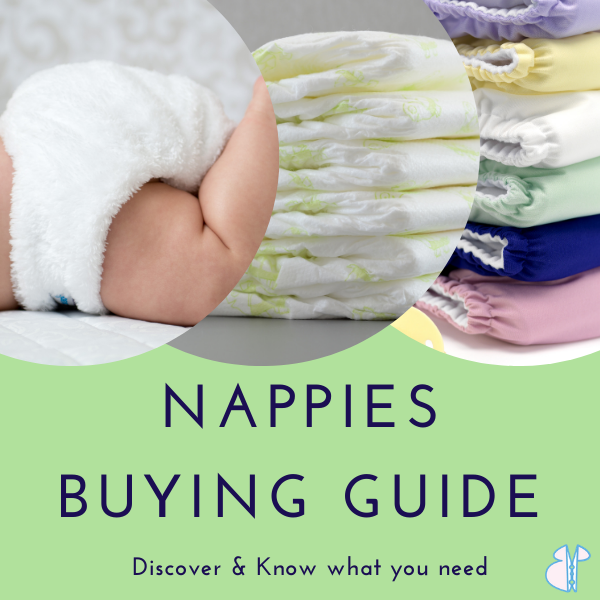

There are many ways to manage your baby's hygiene needs and many products on the market. How you manage nappy hygiene needs will depend on your home environment, how often you are out and about, and where you go. It will also depend on your awareness of your options and comfort levels with trying something different.
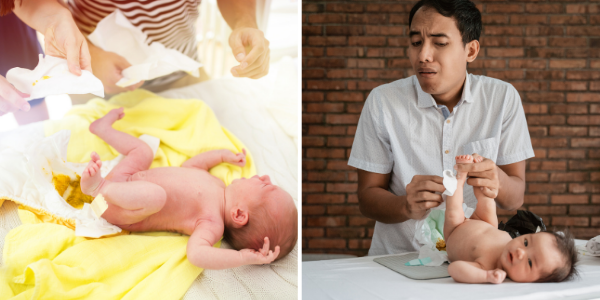
In your baby's first days they clear the 'meconium' tar poos and first wees which can be a rusty/orange/red colour from salts of uric acid. It is typical for newborns to have at least 6 very wet cloth or 5 very wet disposable nappies in a 24 hour period. Their bowel movements can be runny or soft and appear 3 or more times per day in their nappies, however this gradually settles down over time and their movements become more formed. Breastmilk poos will look different to formula poos and then it all changes again once solids are introduced! There's no solid rules for how many bowel or bladder movements your baby will have at any given time. It will depend on intake, their digestion, their health and any number of other factors. You'll get to know what is normal for your baby and you will also see it change over time towards less frequent bowel and bladder movements, but bigger volumes.
What are the options?
In choosing your approach to nappy hygiene, you don't need to lock yourself into a particular way of doing things. Options are a good thing to have so you can change your approach in different situations such as when travelling and if someone else is looking after your child.
1. No Nappies - known as Elimination Communication
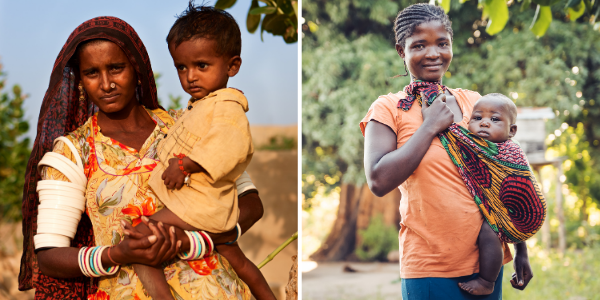
In many countries, where nappies (or diapers) aren’t common, natural infant hygiene or elimination communication is practised with a lot of success. There are a lot of resources online and in books that explore how this works for those wanting to explore this option and are new to the concept such as The Diaper-free baby: The natural toilet training alternative (book) & the Mayim Bialik - how to never use diapers - YouTube Video.
Unfortunately, this approach is not common, so it is unlikely that your friends and family will understand this choice at first. You'll need to do your own research to find out how to make this option work and be flexible around when you might need to use nappies occasionally.
2. Nappies
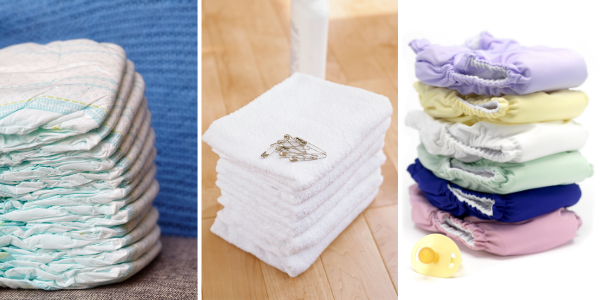
The most common practice in Australia is to use a nappy to catch those wees and poos and keep your baby dry. There are a range of nappy types available for all tastes and lifestyles.
Nappies fall into two main categories, disposable/single-use or reusable cloth nappies. Just as reusable menstrual products and eco-friendly personal care products are gaining popularity, so are cloth nappies. Cloth is harder on the wallet initially, however, can pay off in the end, especially if used for several children. In contrast, the extra cost on your grocery bill of buying disposable nappies every week over the pre-toilet years does add up. This option also contributes to landfill unless you buy the compostable varieties.
Types of nappies:
Disposable nappies
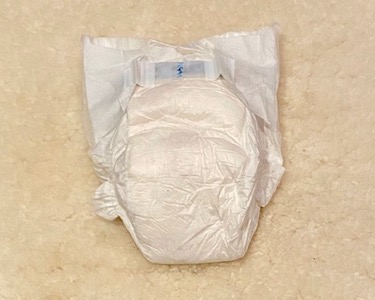
Disposable nappies are the most commonly used option for dealing with your baby's hygiene needs. The first thing to know is that all are not created equal in absorbency, fit, materials (and eco-credentials), quality and pricing.
Disposables come in sizes from newborn to junior which you can choose based on your baby's weight. The newborn size is generally up to 5kg which would last the average sized baby just over a month before they start to grow out of this size. Keep this in mind when stocking up on nappies so you don't get over-stocked - if you use 6 newborn nappies a day for a month this would equal 180.
Before their first month is finished, the average baby will fit into the next size (Infant 4-8kg) so this is a great size to stock up on as it will last much longer. After that, the next size usually starts from 6kg (average 2 1/2 month old). It can be worth going up a size from when they start fitting into the next size especially for nighttime nappies and for heavy wetters.
It can take some trial and error to find a brand with reasonable quality and affordability. You will get to know what works since you can go through so many of them in your baby's nappy wearing career. Some people choose to go part-time with disposables and part-time with cloth nappies since they find disposables more reliable for nighttime use and for outings. It is entirely up to you how you choose to do your nappies.
The good:
- Easy to use and to get a good fit - choose size based on weight, fit around the thighs/waist and absorbency.
- Convenient as there is nothing more to do after disposing of them.
- Very absorbent - will typically last longer than cloth nappies (4-5 hours for urine) before needing to be changed and the moisture is absorbed into the nappy which helps to keep bub's skin dry.
The bad:
- Contibute to landfill and take a long time to break down - some brands are made of biodegradable materials but most mainstream brands are not.
- Chemicals used in some nappies - Parents have reported skin reactions from certain disposable nappies and investigations into nappies have found a range of chemicals at unhealthy levels including for brands sold in Australia. Chemicals found in nappies included endocrine disruptors and neurotoxicants. To avoid the chemicals there are loads of companies producing non-toxic Earth-friendly nappies such as Joonya Nappies (sizing from 6kg to 20kg).
- Can stink if left in the bin - nappy bags or nappy pail bins help to reduce the smell. Scraping out solids into the toilet also helps to reduce the smell.
Interesting:
- Change your baby's nappy as soon as they have finished their bowel movement to prevent nappy rash.
- To prevent leaks, open out the nappy fully before putting under your baby. Ensure the gusset around the thigh is fanned out and flatten out the waist tabs over the hip before putting the waist fastener in place. For boys, point the penis down and create a pocket in the front of the nappy before fastening over the belly above the genital area. This stops any leaks escaping up the front of the nappy and creates plenty of space for the genitals.
- When taking off the nappy, roll the front of the nappy like you would roll up a sleeping bag until you are to the top of the nappy, then use the waistband tabs to secure the nappy into a neat package. This helps contain the contents of the nappy and minimises any smells too.
- Some nappies can be composted to biodegrade naturally after use.
Where to find Disposable nappies:
Other handy products:
- Ubbi Nappy Pail - This is a great option for disposing of disposables since it uses regular bin bags rather than you needing to buy special refills. The sliding lid helps to contain the smells and is just the right size for dropping the nappy in.
- Wotnot biodegradable nappy bags - when out and about, nappy bags can be used to seal nappies for disposal into any bin or to take home with you. Wotnot are a biodegradable option or you could opt for regular nappy bags/sacks. Throw some in your nappy bag/backpack or use a dispenser (from eBay or Amazon Au).
Traditional cloth nappies
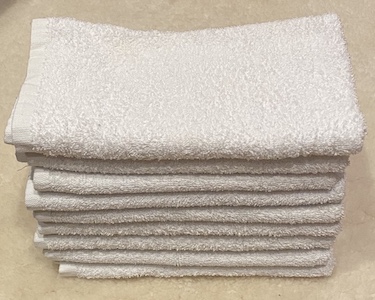
In our grandparent's or even our parent’s day, cloth nappy squares were in common use. These are a square of absorbent terry towelling or woven cloth usually made of cotton. An example of these are the Big Softies Terry Towelling Cotton Nappies or the various Prefold Cloth Nappies varieties and inserts available.
Use of this option involves washing, drying (in the sun), folding and fixing the nappy into place with a clasp such as a snappi, pin or tucking method.
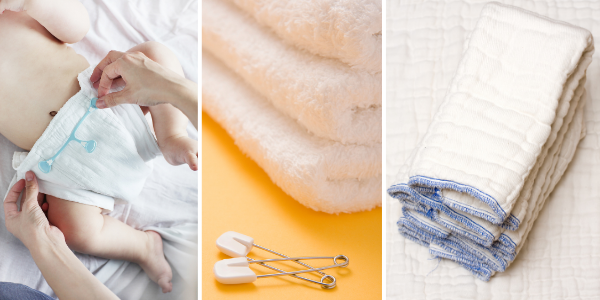
The good:
- Very handy for everyday spills and spit-ups as well as for use as a nappy.
- Due to the simple design, they are easy to wash and fast to dry.
- Very economically priced for the budget-conscious.
- Very durable, holding up after many years and many wash cycles.
- To prevent soaking through the clothes or surrounding areas, you can buy PUL nappy covers (eBay or Amazon Au) or wool nappy covers (eBay or Amazon Au).
The bad:
- Bit of a learning curve to learn the different folds and what folds and fastening works best for your baby - Midwife, Lois Wattis shows the different ways to fold and put on a traditional square nappy in her YouTube video.
- Cloth nappies will generally require changing around 2 hourly to ensure baby's skin is not exposed to too much moisture. This will vary depending on how heavy a wetter your baby is.
- You'll have to scrape off the poo into the toilet and learn how to care for them to sanitise them between uses.
Interesting:
- The fabric can stiffen with being dried in the sun, but will soften after being run in the dryer.
- Even if you don't want to use these as nappies, they are worth buying as they will get plenty of use. Some people continue to use them as cleaning rags long after their babies have grown up.
Where to find cloth nappies:
Other handy products:
- Cloth Nappy Covers Amazon Au & eBay.com.au
- Nappy Fasteners & nappy pins (eBay.com.au)
- Nappy Fasteners (Amazon Au)
Modern Cloth Nappies (MCN)
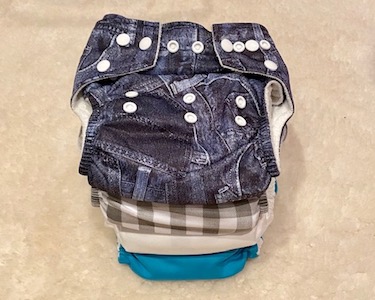
When it comes to modern cloth nappies, there are a range of designs, cuts, and fastening options to choose from. When looking for the perfect MCN for your baby, you will be considering the design, the fit, absorbency, ease of use, quality, and pricing. There are tonnes of brands to choose from with each brand having a few different styles to choose from. This is where it can get very confusing!
There are so many types that when people start off, they buy mixed trial packs of different brands or second hand bundles until they find out what works for them, or there are nappy libraries that offer this service. Watching product videos can be helpful to get an idea on how to fit each brand/style of nappy and get a better idea of their features and fit. Checking out the Australian Nappy Association Cloth Nappy Reviews website, Clean Cloth Nappies and joining cloth nappy Facebook Groups for advice will also get you on the road to success. The main types are All-in-One (AIO) or All-in-two (AI2), however there are also fitted nappies, fitted covers, newborn nappies, night nappies, swim nappies and training pants.
Adjustment options
The most common fasteners are snaps and velcro with elastics around the thighs and back top of the nappy to help with getting a secure fit.
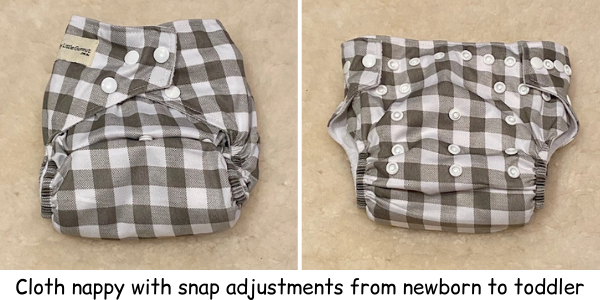
Snaps are great for getting the right fit around the waist and thighs which is important for preventing leaks. The front snaps are for smaller babies to reduce the rise of the nappy and the waist snaps are fully adjustable even for very small babies where you can overlap the tabs. Not all snaps are created equal, some are better quality and harder wearing than others.
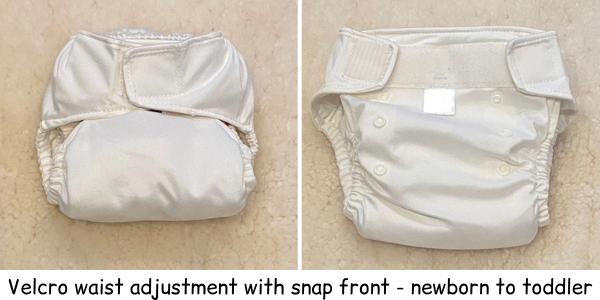
Velcro adjustable MCNs are fast and easy to use but do have some downfalls.
- For washing, the velcro tabs should be folded over and washed in a washbag to prevent the velcro from attaching to other washing and prevent the velcro from collecting fluff.
- Velcro makes a ripping noise when removed, which can disturb a settled baby if you are trying to change their nappy whilst half asleep.
- The hook side of the velcro can rub on your baby's skin and cause a rash if the nappy is not adjusted correctly.
Some nappies incorporate both the velcro and the snaps options for the user to choose between such as the GroVia O.N.E. which has replaceable velcro to extend the life of the nappy if the velcro wears out.
Designs
In the world of MCNs there are many design options to choose from. All MCNs aim for a quicker, better fit and more reliable waterproof outer than what traditional cloth nappies could offer.
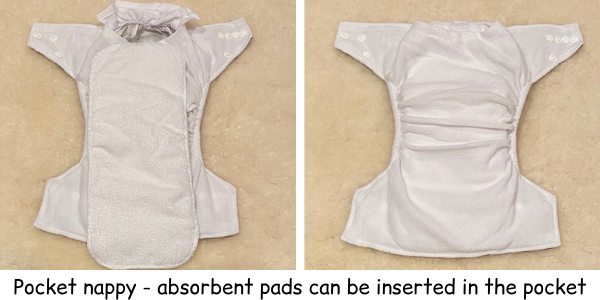
The Pocket Nappy, also known as an All-in-two (AI2), is one of the more common types of MCNs. These allow for the absorbent pads/inserts to be fitted inside the 'pocket' of the nappy shell which is located between the absorbent inner and waterproof outer lining through an opening at the back top of the nappy. The boosters can be used both inside the pocket and a booster layer over the top of the inner layer of the nappy. Most pocket nappies come with one or two inserts and additional inserts can be purchased. The best liners are highly absorbent without adding a lot of bulk. Liners become more absorbent the more you wash them, so will improve over time or after about 5 wash cycles. Pocket nappies are versatile in that if the liners that come with the shell aren't absorbent enough or not as expected, you can upgrade your inserts with another brand.
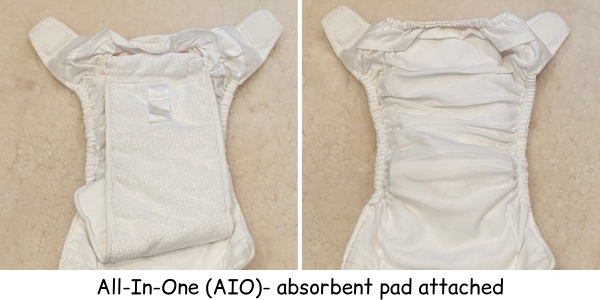
Similarly to the pocket nappies, the All-In-One or AIO nappies have an insert that can be stuffed into the 'pocket' of the nappy. The difference is that the insert is attached permanently to the nappy. The insert can be pulled out to wash and easily dry the nappy. AIOs are perfectly fine for beginner MCN users but aren't as versatile as pocket nappies if the liner isn't suitable. Some designs such as the GroVia All In One incorporate an additional booster which can be snapped to the inner layer and removed for washing.
The good:
- MCNs will save you money in the long-run, especially the one size fits all nappies.
- You can pick up second-hand nappy stashes easily from second-hand markets such as eBay (once you are done with them, you may be able to sell your stash or pass them onto a friend).
- MCNs are eco-friendly, super-soft and
- Cloth bums are the cutest and great for photos - You will be spoilt for choice with attractive designs and colours available.
- Once you learn a good cleaning routine and get set-up with dry-pailing (a pre-wash routine and how to do a deep clean when needed) you will be able to overcome anything your bub throws at the MCNs. See our Home-Based Hygiene topic for laundry hygiene tips.
The bad:
- Cloth nappies will require changing more often than disposables since the moisture is more inclined to sit on the skin. As soon as a bowel movement occurs, it is best to change the nappy straight away.
- It can take some time to find the brands/styles that fit your bub properly - nappy libraries and cloth nappies online communities can help though.
- It can also be a learning curve for you to learn how to properly fit the MCN and how many boosters you need so that you don't get leaks - make sure you watch the instructional videos and get advice from experienced cloth nappy users to overcome these barriers.
- To learn a good cleaning routine takes some time - it is worth it because you will be able to tackle any stain your kid throws at anything in the future.
- Building a full nappy stash can be initially expensive, however, if you stick to using them, you will be in front in the end over disposables.
Interesting:
- Cloth nappy sellers usually offer bulk starter packs and suggest a minimum quantity of 24 nappies due to the nappies needing to be washed within 3 days to stay in good condition.
- It could be worth keeping a small number of disposable nappies as a backup even with a full stash of cloth nappies.
- Everyone who will be changing your baby's nappies will need to be on board with whatever regime you choose.
- Some slimmer baby pants/leggings might struggle to fit over MCNs, so pant upsizing might be needed.
Where to find MCNs:
- Search Nappies (Cloth) on eBay
- Pocket Cloth Nappies (Amazon)
- All-in-One Cloth Nappies (Amazon)
- Cloth Nappies from Biome Eco Stores
- Cloth Nappies from Modibodi
Popular Brands:
- Alva Baby Cloth Nappies - eBay, Amazon Au
- Alcmena Cloth Nappies - eBay
- Baby Beehinds - Biome Eco Stores, eBay
- Bare & Boho - eBay
- Bubblebubs - eBay
- Designer Bums - eBay, Biome Eco Stores
- EcoNaps - Biome Eco Stores, eBay
- GroVia - Biome Eco Stores, Amazon Au
- Itti Bitti - eBay
- Pea Pods - eBay, Biome Eco Stores
Other Handy Products:
- Booster Kits or extra liners can be purchased for most branded nappies and mixed and matched between some brands. These are great for heavy wetters, to extend time between changes and for nighttime use. Shown above: EcoNaps Mixed Booster Kit ; GroVia Organic Cotton Nappy Booster
- Disposable Liners can be used in MCNs or cloth nappies. They come in rolls to tear off the liner and place in the nappy to catch solids and for easy removal. The downside to using a liner is that it can keep the solids against baby's skin rather than it soaking into the nappy which can irritate their skin if left too long. These could be worth a try to see if these make the cloth nappies easier to clean and for easier disposal of solids. Shown above: EcoNaps Mess-Free Bamboo Liners ; Pea Pods Bamboo Liners
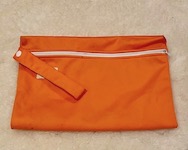
- Wet bags are essential if you are using cloth nappies and going to be changing these when out and about. They come in a range of sizes and some have 2 sections, to keep clean/dry and dirty/wet separate. These are also great to purchase in the larger size for storing swim clothes and towels until you get home. Find Waterproof Wet Bags on eBay & Biome Eco Stores
- For washing your cloth nappies, delicates and small items, a washing bag is super handy. These can help with washing velcro MCNs to keep the velcro from catching on other clothes. Washing bags are also great for delicate items and small items such as socks which can sometimes get lost in washing machines. Find Guppyfriend Washing Bag (Biome Eco Stores.
- It is recommended to rinse/remove any solids from your nappies before dry pailing until you can wash them. Nappy buckets usually come with lids for wet pailing/soaking with the lid on for safety. A strucket is an alternative to the traditional nappy bucket as it is a strainer and bucket in one. This allows you to put your nappies in the strucket to rinse your nappies and then drain the water out using the outer plug. The clothes/nappies can then dry pail until you are ready to wash them. Shop for the Strucket at Amazon Au & eBay
Disposable Pull-up pants/nappies
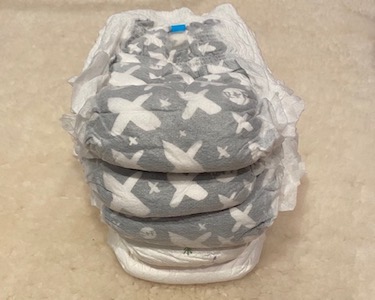
Once your baby is crawling and progressing towards walking it can be difficult (if not sometimes impossible) to get them to lay still for nappy changes. This is also an age where they can be leaking through nappies at night if you didn't get the fit 100%. This is the perfect age to start looking at nappy pants. They have elasticised sides with the same absorbent layering of disposable nappies. If the nappy is soiled, you simply remove the pants by ripping down the seams at the sides of the waistband, then once your baby is wiped down, they either lift their bottom while you pull the pants on or they can stand up for this part. If the nappy is only wet, you can rip the sides or pull the whole nappy off over the feet.
Nappy pants are easier to get in the larger sizes, however some brands such as Pampers and Ecoriginals go as small as 6kg and can be bought in bulk packs.
Most cloth swim pants are pull up style in both disposable and cloth types. If you are using cloth, some shells/covers are pull-up style and most cloth nappies can be fastened loosely, then pulled up and tightened once on.
The good:
- No need to fasten, elastics ensure a good fit
- Easy to use even when baby is standing up and won't lay down for long
- Hardly any leaks if leg gussets fitted properly
- Very absorbent
The bad:
- Disposable options have the same eco problems as other disposables such as poor biodegradability and use of chemicals
- Can stink if left in the bin - nappy bags or nappy pail bins help to reduce the smell. Scraping out solids into the toilet also helps to reduce the smell.
Interesting:
- There are some cloth options out there for pull-ups - some shells/covers are pull-up style, most cloth nappies can be fastened loosely, then pulled up and tightened once on and training pants are pull-up style.
- Most cloth swim pants are pull up style in both disposable and cloth types.
Where to find nappy pants and pull-ups:
- Disposable nappy pants - Amazon Au, eBay, Ecoriginals
- Cloth nappy pants - Amazon Au, eBay
- Pull-up cloth nappies - Amazon Au, eBay
- Swim nappies (cloth) - eBay, Amazon Au, Biome Eco Stores (including EcoNaps, My Little Gumnuts & Pea Pods)
- Swim nappies (disposable) - eBay & Amazon Au
Other handy related products:
- Nappy Changing Bags & Backpacks - The Stork Nest, Amazon Au, eBay
- Nappy Change Mats, Covers & Pads - eBay, Amazon Au, The Stork Nest, Mocka
- Nappy Caddy - For your nappy changing station - eBay, Amazon Au, The Stork Nest
- Nappy Changing Essentials from The Stork Nest
So there you have it, everything you need to know to get you started on your nappy journey. You'll have seen it all by the end and certainly not be worried by a bit of poo ever again. Remember to pay it forward by passing your wisdom back into forums that helped you and onto friends and family.
Please note: Above all, any information on this website aims to provide general ideas for informational and educational purposes only. We encourage users to investigate several information sources, including, where necessary, independent individualised medical advice before making any decisions that could affect you or your child’s health or wellbeing.
* BabyPeg participates in various affiliate programs and may earn a commission for referring our users through the links provided. This is at no additional cost to our users. We take great care in choosing products and services which align with the mission of promoting better health and wellness for our BabyPeg community. Where possible, products are tried and tested by us. To continue to provide BabyPeg as a free service and reach as many parents as possible, we appreciate your support in using the link provided to purchase if you decide the product is right for you.
